




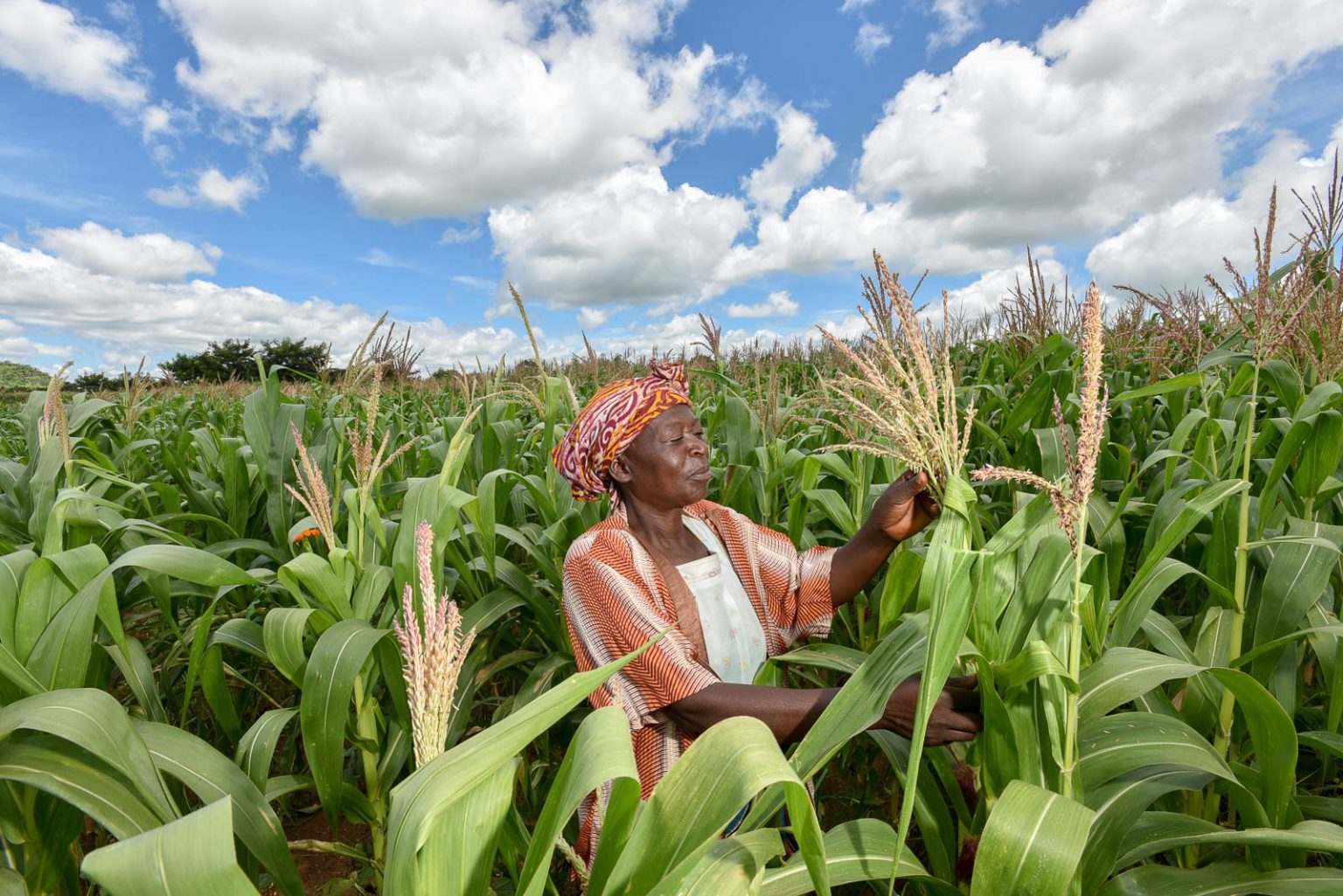
Vision
Core values
Mission
We are experts in
Milkweed Biologicals (U) Ltd was founded in 2017 by Thomas Ayshford, a British Entomologist and Microbiologist living in Uganda. Before coming to Uganda in 2015, Thomas worked with the Natural History Museum in London for four years in the department of Entomology.
Our company’s main aim is to lead the way in Uganda to facilitate and encourage the reduction of Chemical Pesticides in the Readmore
Organic
Tested
Trusted

Our many years of experience is
the main reason for our success
Expert team
Completed projects
Beneficial Fungi
1. Foundation-X15 (Trichoderma koningiopsis, CFU 9*109, Strain X15)
2. MaxKill(Beauveria bassiana) (CFU 9*10(9) Strains X23, X5)
3. ENTOGUARD -X20 (Isaria fumosoroseus)
4. Entoguard Super (Metarhizium anisopliae)
5. NEMARID3X® (Purpureocillium lilacinus) (CFU 9*10(9). Strains X22)
6. Farm joy plus (Lecanicillium Lecanii)
7. ENTORID (General insecticidal cocktail-GIC)
8. Thrips and other sucking insects cocktail (Thrips mix)
Beneficial Bacteria
Beneficial Mites
INTEGRATED PEST MANAGEMENT
IPM is an ecosystem-based strategy that focuses on long-term prevention of pests or their damage through a combination of techniques such as biological control, habitat manipulation, modification of cultural practices, and use of resistant varieties. IPM can be used to solve pest problems while minimizing risks to people and the environment and can be applied to manage all kinds of pests in farms. Pesticides are used only after monitoring indicates they are needed. Pest control materials are selected and applied in a manner that minimizes risks to human health, beneficial and non-target organisms, and the environment. This results in increases in soil fertility and reduction in pesticide use which have excellent benefits for famers. With fewer sprays in the crops, birds and animals, there is an increase in production and quality.
How Does IPM Work?
IPM focuses on long-term prevention of pests or their damage by managing the ecosystem. With IPM, actions are taken to keep pests from becoming a problem. In IPM, monitoring and correct pest identification help to determine whether management is needed. After monitoring, information about the pest, its biology, and environmental factors, control measures are then applied accordingly. The most effective, long-term way to manage pests is by using a combination of methods that work better together than separately. Approaches for managing pests are often grouped in the following categories;
Cultural
controls
Mechanical and physical controls
Chemical control
IPM Programs
Milkweed offers services and programs that combine these IPM principles and practices to design programs biased towards providing biological controls. Individual needs and situations differ from farm to farm but the programs are based on the following six major components:
- Pest identification
- Monitoring and assessing pest numbers and damage
- Guidelines for when management action is needed
- Preventing pest problems
- Using a combination of biological, cultural, physical/mechanical and chemical management tools
- After action is taken, assessing the effect of pest management
Through promoting IPM, we are committed to help farmers to produce products which contribute positively to the health and wellbeing of society.
Meet with our expert team
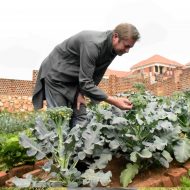







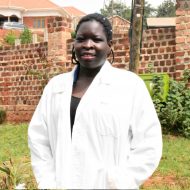


Gallery
Pests And Diseases
DISEASES
- Pythium
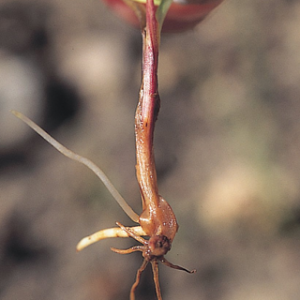 Damping-off frequently attacks young seedlings of almost all kinds of cereals, vegetables and herbs. Just after seedlings have emerged from the soil, they are easily killed by fungus organisms likely to be present in the field. Infected seedlings will appear spindly and stunted, and in cereals the first true leaf is often short, twisted and cupped. Seedlings that die or fall over are said to “damp-off”. Seedlings may also die before emergence, referred to as pre-emergence damping-off. This causes the following problems in cereals:
Damping-off frequently attacks young seedlings of almost all kinds of cereals, vegetables and herbs. Just after seedlings have emerged from the soil, they are easily killed by fungus organisms likely to be present in the field. Infected seedlings will appear spindly and stunted, and in cereals the first true leaf is often short, twisted and cupped. Seedlings that die or fall over are said to “damp-off”. Seedlings may also die before emergence, referred to as pre-emergence damping-off. This causes the following problems in cereals:
- Seedling may fail to appear above the ground or collapse as soon as they emerge.
- Seedlings and plants suffer from stunting and soft brownish water rot.
Solution: Foundation-X15 (Trichoderma Koningiopsis)
- Fusarium
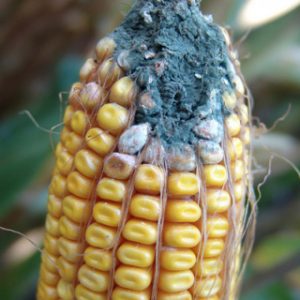 The commonest manifestation of Fusarium in cereals is Fusarium Ear Blight (FEB) which is also known as Fusarium Head Blight (FHB) or scab. This is caused by a range of Fusarium fungi which infect the head of the cereal limiting grain development. FEB can cause severe economic loss to farmers as it can limit yields, while additionally, contaminated cereal cannot be sold for food or animal and chicken feed.
The commonest manifestation of Fusarium in cereals is Fusarium Ear Blight (FEB) which is also known as Fusarium Head Blight (FHB) or scab. This is caused by a range of Fusarium fungi which infect the head of the cereal limiting grain development. FEB can cause severe economic loss to farmers as it can limit yields, while additionally, contaminated cereal cannot be sold for food or animal and chicken feed.
- Ear or head blight (also known as scab) in maize, wheat and barley which infects the heads of the crops reducing grain yield.
Solution: Foundation-X15 (Trichoderma Koningiopsis)
CEREAL SOIL HEALTH
- Enhanced Crop Development
For favorable soil health, it is important that there are favorable interactions of all soil components including microbiota, plants and animals. This is key for agricultural sustainability and required for emerging population food needs. Modern agriculture therefore requires an integrated water, crop, pest and disease management strategy, which includes managing soil fertility and soil physical properties through promotion of soil biodiversity and soil biological processes.
While soil nutrients may be present in large amounts in the soil, they are in forms that cannot be accessed by plants. Microorganisms help to break them down to levels where plants can absorb them. Such nutrients may include phosphorous and potassium. Many bacteria and fungi secrete organic acids or other chemicals (siderophores) which dissolve the minerals and make them available to plants.
Using these micro-organisms improves plant health and crop yield improving farmers’ incomes. This increase in yield and quality has been demonstrated in a wide range of plants even during times of stress.
Solutions: Foundation-X15 (Trichoderma Koningiopsis), ProBoost (Bacillus Subtilis), KemetBSF+ (Black soldier Fly Compost + Trichoderma Koningiopsis + Bacillus Subtilis)
- Enhanced Root Development
Root architecture, with its shape and structured development, is important for crop success. This is the basis of a healthy plant as shoot growth, quality and crop yield all depend on a large, healthy root system.
A well-developed root network encourages beneficial interactions with micro ‐ organisms that allows soil exploration, resource acquisition and maintenance of crop performance even under trauma caused by disease, and limited soil, water and nutrients.
The beneficial micro-organisms in this network effectively reduce root rots and increase the solubility of phosphates and micronutrients such as zinc, copper, iron and manganese thus enhancing plant performance.
Solutions: Foundation-X15 (Trichoderma koningiopsis), ProBoost (Bacillus Subtilis), NEMARID3X (Purpureocillium lilacinus)
Testimonials From Clients
- Mealy Bugs
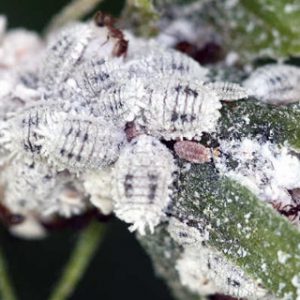 About: Mealybugs occur in two different forms depending on their sex: female adults are wingless soft, oval, flat-bodied insects covered with a white, powdery wax (hence the name ‘mealy bug’), while males are winged wasp-like flying insects as adults. The most common species in the greenhouse is the citrus mealy bug, Planococcus citri
About: Mealybugs occur in two different forms depending on their sex: female adults are wingless soft, oval, flat-bodied insects covered with a white, powdery wax (hence the name ‘mealy bug’), while males are winged wasp-like flying insects as adults. The most common species in the greenhouse is the citrus mealy bug, Planococcus citri
Damage: Mealy bugs, like aphids and whiteflies, suck sap from the plant’s phloem tissues causing stunting, leaf deformation and sometimes yellowing. They also excrete honeydew that serves as a substrate for black sooty mold development, affecting photosynthesis and aesthetic value of the plant.
Solution: FarmJoy Plus (Lecanicillum lecanii), MaxKillx5 (Bavaria Bassiana)
- Coffee Berry borer
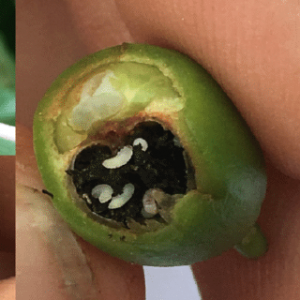 Biology:
Biology:
Damage:
Bio control: MaxKillx5 (Beauveria Bassiana)
- Parasitic Plant Nematodes
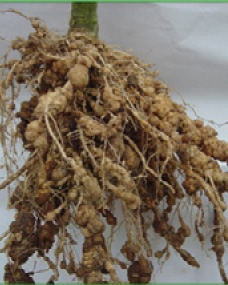 About: Nematodes are tiny, round-bodied, un-segmented, worms. Plant parasitic nematodes cause economic losses to horticultural and field crop worldwide. There are also serious concerns about the use of nematicide in terms of food safety and environmental quality issues.
About: Nematodes are tiny, round-bodied, un-segmented, worms. Plant parasitic nematodes cause economic losses to horticultural and field crop worldwide. There are also serious concerns about the use of nematicide in terms of food safety and environmental quality issues.
Damage: Stunting and yellowing with a tendency to wilt. Distortions, swellings and knots on the roots, mid- day wilting of the crop, patches of poor crop growth on the field, galls on the roots, stubby roots and lesions and dark spots on the root.
Solutions: FarmJoy Plus (Lecanicillium lecanii), NEMARID3X (Purpureocillium lilacinus)
- Scale Insects
About:
Damage:
Solutions: MaxKillx5 (Bauvaria Bassiana)
- Thrips
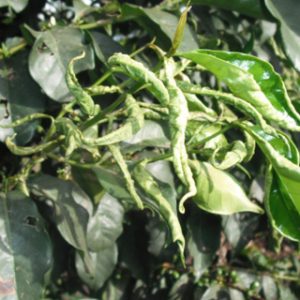 Adult thrips are tiny (1-2mm long) slender insects with fringed wings. Immature thrips are similarly shaped with a long, narrow abdomen but lack wings. Most thrips range in colour from translucent white or yellowish to dark brown or blackish, depending on the species and life stage.
Adult thrips are tiny (1-2mm long) slender insects with fringed wings. Immature thrips are similarly shaped with a long, narrow abdomen but lack wings. Most thrips range in colour from translucent white or yellowish to dark brown or blackish, depending on the species and life stage.
Damage: Thrips feed in rapidly growing tissue by sucking sap from individual cells. The sucked out empty cells are filled with air, causing a silvery appearance. Petals may exhibit ‘’colour brake,” which is pale or dark discoloration of petal tissue affected. Infested terminals may discolor, deform, and drop leaves prematurely. When thrips populations are high on ornamentals, flower buds may become deformed and fail to open. Petals may be covered with brown streaks and spots. Western flower thrips (Frankliniella occidentalis) can also vector certain spoviruses including Impatiens Necrotic Spot Virus (INSV) and several strains of Tomato Spotted Wilt Virus (TSWV)
Solution: MaxKillx5 (Beauveria Bassiana), ENTOPHAGE-x (Stratiolaelaps scimitus), FarmJoy Plus (Lecanicillium lecanii), NEMARID3X (Purpureocillium lilacinus)
Enhanced Crop Development
Improvement in agricultural sustainability requires an integrated water, crop, pest and disease management strategy, managing soil fertility and soil physical properties by promoting soil biodiversity and soil biological processes offers the potential for using rhizosphere processes to improve soil quality and productivity.
In many soils, nutrients such as phosphorus, potassium and iron are present in large amounts but in forms that are not available to plants. Many bacteria and fungi are able to make these nutrients available to plants by secreting organic acids or other chemicals (siderophores) to dissolve the minerals. These beneficial micro-organisms are naturally occurring and are prolific and readily available in natural, undisturbed, rich, fertile lands.
The use of these micro-organisms results in high quality crop yields often demonstrated in both size and volume of produce. This increase in yield and quality has been demonstrated in a wide range of plants even during times of stress. Increasing yield while improving quality attributes, such as firmness, colour, size and crop uniformity, gives you the competitive edge and increased profits which are key pillars of sustainable agriculture.
Solution: Foundation-X15 (Trichoderma koningiopsis), Flourish (BSF Compost+Trichoderma+Bacillus Subtilis)
Root Development
Root architecture, with its shape and structured development, is vital to a crop’s success. Shoot growth, quality and yield all depend on the development of a strong plant with a large, healthy root system that helps you get the most out of your fertilizer program.
A well-developed root network encourages beneficial interactions with micro ‐ organisms that allows soil exploration, resource acquisition and maintenance of crop performance even under stress caused by disease and limited soil water and nutrient conditions.
The beneficial micro-organisms in this network effectively reduce root rots and increase the solubility of phosphates and micronutrients such as zinc, copper, iron and manganese thus enhancing growth of the roots and the above ground parts of the plant.
Solutions: Foundation-X15 (Trichoderma koningiopsis), NEMARID3X (Purpureocillium lilacinus).
DISEASES
Armillaria
Armillaria is a parasitic fungi that lives on the trees and woody shrubs, in small dense clumps or tufts. The mushroom tops are usually yellow-brown, with a sticky touch when moist.
Damage: Armillaria is a destructive pathogen in that it causes “white rot” root disease. Armillaria is a facultative saprophyte, feeding on dead plant material which allows it to kill its hosts. This is different to a parasite which must moderate their growth to avoid host death.. An infected tree will die once the fungus has caused significant root damage. Symptoms include shortage of leave in spring and mushrooms grow in clusters from the infected plant.
Solution: Foundation-X15 (Trichoderma Koningiopsis)
TEA SOIL HEALTH
Enhanced Crop Development
Improvement in agricultural sustainability requires an integrated water, crop, pest and disease management strategy, managing soil fertility and soil physical properties by promoting soil biodiversity and soil biological processes offers the potential for using rhizosphere processes to improve soil quality and productivity.
In many soils, nutrients such as phosphorus, potassium and iron are present in large amounts but in forms that are not available to plants. Many bacteria and fungi are able to make these nutrients available to plants by secreting organic acids or other chemicals (siderophores) to dissolve the minerals. These beneficial micro-organisms are naturally occurring and are prolific and readily available in natural, undisturbed, rich, fertile lands.
The use of these micro-organisms results in high quality crop yields often demonstrated in both size and volume of produce. This increase in yield and quality has been demonstrated in a wide range of plants even during times of stress. Increasing yield while improving quality attributes, such as firmness, colour, size and crop uniformity, gives you the competitive edge and increased profits which are key pillars of sustainable agriculture.
Solution: Foundation-X15 (Trichoderma koningiopsis), ProBoost (Bacillus Subtilis), KemetBSF+ (Blackfly Compost + Trichoderma + Bacillus Subtilis)
Enhanced Root Development
Root architecture, with its shape and structured development, is vital to a crop’s success. Shoot growth, quality and yield all depend on the development of a strong plant with a large, healthy root system that helps you get the most out of your fertilizer program.
A well-developed root network encourages beneficial interactions with micro ‐ organisms that allows soil exploration, resource acquisition and maintenance of crop performance even under stress caused by disease and limited soil water and nutrient conditions.
The beneficial micro-organisms in this network effectively reduce root rots and increase the solubility of phosphates and micronutrients such as zinc, copper, iron and manganese thus enhancing growth of the roots and the above ground parts of the plant.
Solution: NEMARID3X (Purpureocillium lilacinus), Foundation-X15 (Trichoderma Koningiopsis), ProBoost (Bacillus Subtilis), Entophage-Gen (9CFU 9*10(9).
LIVESTOCK PESTS
TICKS
All livestock keepers know about ticks. These present the biggest challenge in livestock operations.
About: Ticks are external, temporary and obligate parasites which depend on blood to live. Hot and humid climates favor their survival, while the low temperatures inhibit their development. Ticks belong to two main families, Ixodidae and Argasidae. The most important is the Ixodidae, also called hard ticks, due to the presence of a rigid chitinous shield, which covers the entire dorsal surface of the adult male. In the adult female and in the larva and the nymph it extends only by a small area, which allows the abdomen to swell after feeding. The other family is the Argasidae or soft ticks, so called because they lack of a shield. There is a third family (Nuttalliellidae) to which only one species belongs.
Ticks are one of the biggest public health and veterinary problems in the world. These ectoparasites can impact the production and health of the animals, either directly by the effect of their bites or by the infectious agents they transmit, which include viruses, bacteria, rickettsiae and protozoa. .
Damage, harm and economic impact
- Massive infestations of ticks can cause anemia, as a result of blood loss. Each time a tick bites its host to feed it causes stress and weakens its immune response affecting its productivity, which results in losses in the production of meat and milk, increased morbidity and in many cases mortality, in addition to the indirect economic losses for producers related to prevention and control costs.
- Sites bitten by ticks cause lesions that may predispose to localized dermatitis, secondary bacterial infections, or invasion by flies (miasis) that are attracted to bloody areas [6]. Certain ticks contain paralyzing toxins in their saliva (for example Dermacentor andersoni, Ixodes rubicundus, I. holocyclus) that can even cause the death of affected animals. The saliva of Hyalomma truncatum can also cause toxicosis that manifests as widespread eczema in African livestock species.
- Tick bites and subsequent itching are certainly irritating for livestock that reacts with intense scratching and stress. In severe cases scratching can cause wounds that become infected. Weight loss and reduced milk production may result.
Solution: NeemFort (Neem extract), ENTOPHAGE-X20 (CFU 9*10(9) (Isaria) Entophage Super (CFU 9*10(9) (Metarhizium)
.Application: As advised by the Customer Care Officer.
POULTRY MITES, RABBIT, PIG AND GOAT MITES.
About:
The red poultry mite, also known as the chicken mite (Dermanyssus gallinae), is a significant ectoparasite of commercial egg laying and backyard chicken. Infestations can often go unrecognized for long periods of time, as signs presented by the birds are often initially subtle. The mites are nocturnal and will hide in cracks and crevices of chicken coops during the daylight hours only coming out at night to feed on the chickens. Red poultry mites are transmitted to flocks through infected hosts (including other birds, rodents and humans).
Damage
Chicken flocks infested with red poultry mites often develop anemia, increased stress and feather pecking (loss), restlessness, and show changes in sleep patterns and associated roost positions. Anemia presents as a pale comb and wattles, dullness, reduced egg production, and weakness. Poultry mites are a menace in poultry farms. Poultry mites drink chicken blood; almost doubling their size when full. Chickens become anemic, and can even die from an infestation. Sitting chickens are at greater risk of a slow blood-letting death. Most of the solutions on the market today are chemical based. Lucky enough, we have a safe and proven biological solution: Stratiolaelaps Scimitus (Hypoaspis miles).
Adult red poultry mites are about 0.6 to 1 mm in length, have 8 legs and can range in color from white to gray, to black to deep red (depending on whether it has recently fed on blood). They have a rapid life cycle and can grow from egg to larva, followed by nymph and the last adult stage, in less than 2 weeks. They are also able to survive for up to 9 months in the environment without feeding on a host.
Solution
ENTOPHAGE-x (Stratiolaelaps scimitus, Strain XMpigi)
Stratiolaelaps scimitus is a small (0.5 mm) light brown mite which, as a natural predator, is used by poultry farmers for biological control of the red Poultry Mite and the Grain Mite. Females lay eggs in the soil which hatch into nymphs in 1 to 2 days. Nymphs develop into adults in 5 to 6 days. The lifecycle takes approximately 7 to 11 days.
Benefits
- Reduced operational costs as the solution is cheaper than chemical alternatives.
- Improved productivity and quality of productChickens doused with chemicals won’t be as productive as chickens that haven’t as the chemicals naturally stress the birds! In this case, they will not even notice the good mites.
- Additionally, the products (eggs and flesh) are safer and healthier to eat because of the reduction in chemical residues.
TICKS
Ticks are more than just a pest that irritates a cat or a dog. They can cause terrible illness, transfer blood borne disease and in some cases, cause paralysis and even death. Once identified, it’s important to get these blood-suckers off quickly but calmly to prevent further infection.
About: Ticks are external, temporary and obligate parasites which depend on blood to live. Hot and humid climates favor their survival, while the low temperatures inhibit their development. Ticks belong to two main families, Ixodidae and Argasidae. The most important is the Ixodidae, also called hard ticks, due to the presence of a rigid chitinous shield, which covers the entire dorsal surface of the adult male. In the adult female and in the larva and the nymph it extends only by a small area, which allows the abdomen to swell after feeding. The other family is the Argasidae or soft ticks, so called because they lack of a shield. There is a third family (Nuttalliellidae) to which only one species belongs.
Ticks are one of the biggest public health and veterinary problems in the world. These ectoparasites can impact the health of the animals, either directly by the effect of their bites or by the infectious agents they transmit, which include viruses, bacteria, rickettsiae and protozoa.
Damage, harm and economic impact
- Massive infestations of ticks can cause anemia, as a result of blood loss. Each time a tick bites its host to feed it causes stress and weakens its immune response.
- Sites bitten by ticks cause lesions that may predispose to localized dermatitis, secondary bacterial infections, or invasion by flies (miasis) that are attracted to bloody areas [6]. Certain ticks contain paralyzing toxins in their saliva (for example Dermacentor andersoni, Ixodes rubicundus, I. holocyclus) that can even cause the death of affected animals.
- Tick bites and subsequent itching are certainly irritating for pets which react with intense scratching and stress. In severe cases scratching can cause wounds that become infected.
Solution: NeemFort (Neem extract), ENTOPHAGE-X20 (CFU 9*10(9) (Isaria) Entophage Super (CFU 9*10(9) (Metarhizium)
Application: As advised by the Customer Care Officer.
KemetBSF+
An organic fertilizer produced using larvae of the black soldier fly and mixed with Trichoderma and Bacillus Subtilis.
Bio control agent: Trichoderma Koningiopsis, Bacillus Subtilis
Category: Nutrition
Target challenge: Soil amendment, enhanced crop development
Crop: Cereals, Flowers, Forestry, Bananas, Coffee, Fruits, Vegetables
About: KemetBSF+ is an organic fertilizer produced using larvae of the Black Soldier Fly. Flourish® is used for soil amendment, as a fertilizer and especially as a component of propagation media. It is full of beneficial micro-organisms and is essential in replenishing and enhancing biodiversity in both production substrate and soil. It is also used for protection against fungal and bacterial diseases.
Application: KemetBSF+ is applied to the soil by incorporation, as a soil amendment and propagation media and by both soil and foliar as a fertilizer. Foliar application will require a solution of water that has been run through Flourish and collected.
Royal van Zanten LTD (Mukono)
The challenge we are all facing
As all horticultural companies in the world, balancing effective reduction of chemical use and keeping crops healthy and free from pests and diseases is a challenge. And if you export your products like we do, you also face zero tolerance at customs. Our customers who use our cuttings as their starting material are also forced by their customers to reduce on chemical use.
Our concerns
In the future the chemicals will only reduce, and customs will only be more strict on the zero-tolerance in order to protect their country for invasive pests and deceases. The pests and deceases will not reduce. So our concern is to keep our products free of pests and deceases in order to remain exporting and being a reliable partner for our customers.
What happened?
To face the future with a smile we needed to get more knowledge and experience in Integrated Pest Management (IPM). We have tried and experimented with predatory mites and beneficial nematodes, but it did not do what we had hoped for. There was one or more pieces of the puzzle missing.When I got in touch with Thomas, he explained to me the benefits of beneficial fungi. He explained how it works and why it could work for us as well. And he explained the service they would give us in training and educating our scouts and sprayers. When we started using a part of Milkweed Biological’s products, we realized we needed to learn a lot. We made many mistakes, and we learned from them. With the experience we gained, and the knowledge given by Milkweed Biologicals we became more confident that we had found a missing piece of the puzzle. Pest pressure in many cases reduced and the usage of chemicals went down. Just this year we asked Milkweed Biologicals to make the ultimate IPM plan for one of our greenhouses. They came with a plan which we tried to follow as good as possible. Up to now (3 weeks until the end of the crop) this has been our lowest infested greenhouse so far! In the full 20 growing weeks we have barely seen thrips, caterpillars or spider mites. And if we saw them, we have increased some treatments and/or their concentration. Within a few days the pests reduced and disappeared.
The future
“One trial is no trial”, our research manager says. And he is correct!.But it gave us a push in the right direction. We understand better the synergy between plant, pest and biological treatments. We understand better how we can integrate chemical control with biological control. We will do more trials and we will continue to learn and tweak the applications to our specific situation. The puzzle is not yet finished, but we are getting close!
John van Vredendaal
Farm manger
Partners
Office;
Mawanda Rd., Plot 625 Block 22
Kampala, uganda
Laboratories;
Lugala and Kawanda
Phone: +256 781 473 841 Phone: +256 777 559 897 Phone: +256 705 578 548
Having trouble? Find the answer to your query here. Don’t hasitate to contact us!
[ct_contact_form id=”185″]

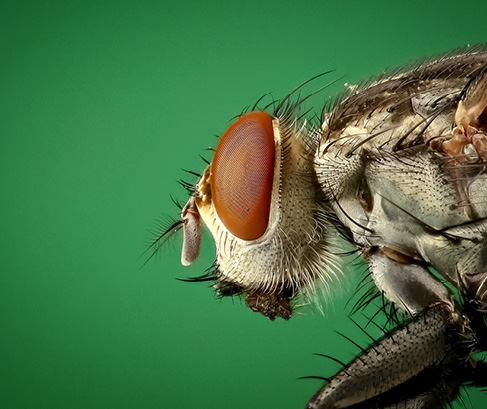
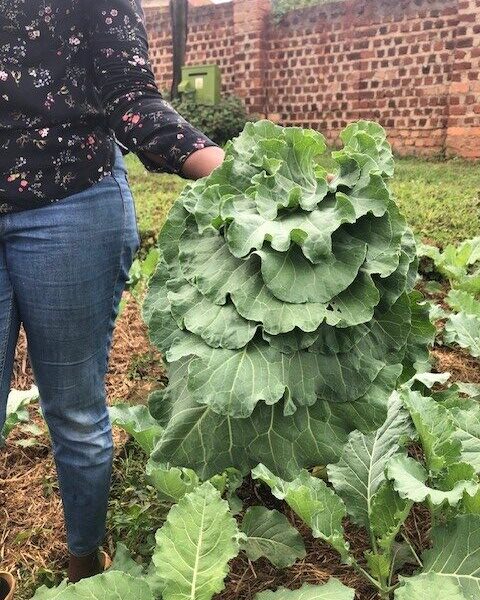

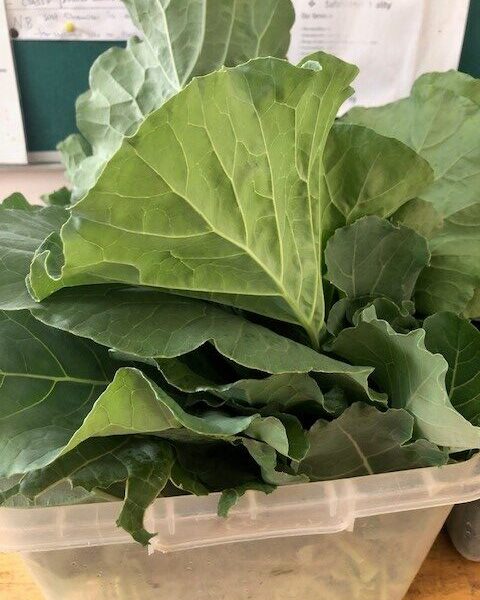
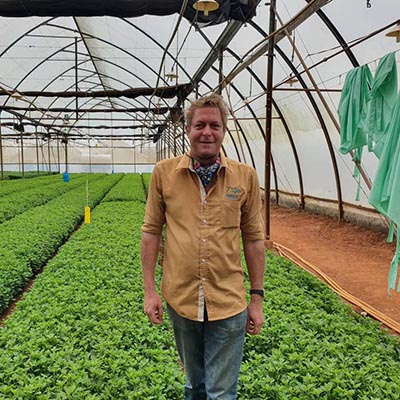









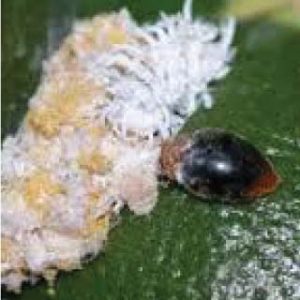 Mealy bugs occur in two different forms depending on their sex: female adults are wingless soft, oval, flat-bodied insects covered with a white, powdery wax (hence the name ‘mealy bug’), while males are winged wasp-like flying insects as adults. The most common species in the greenhouse is the citrus mealy bug, Planococcus citri.
Mealy bugs occur in two different forms depending on their sex: female adults are wingless soft, oval, flat-bodied insects covered with a white, powdery wax (hence the name ‘mealy bug’), while males are winged wasp-like flying insects as adults. The most common species in the greenhouse is the citrus mealy bug, Planococcus citri. About: Aphids have soft pear-shaped bodies measuring 1.5-4mm in length with long legs and antennae, their colour ranges from green, yellow, brown, red, to black depending on the species. They occur in clusters around the young terminal shoots or under the leaves.
About: Aphids have soft pear-shaped bodies measuring 1.5-4mm in length with long legs and antennae, their colour ranges from green, yellow, brown, red, to black depending on the species. They occur in clusters around the young terminal shoots or under the leaves.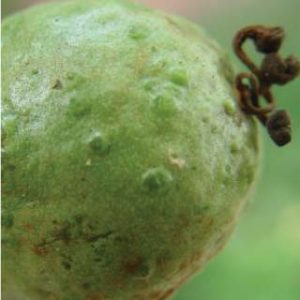 About: Adult thrips are tiny (1-2mm long) slender insects with fringed wings. Immatures are similarly shaped with a long, narrow abdomen but lack wings. Most thrips range in colour from translucent white or yellowish to dark brown or blackish, depending on the species and life stage.
About: Adult thrips are tiny (1-2mm long) slender insects with fringed wings. Immatures are similarly shaped with a long, narrow abdomen but lack wings. Most thrips range in colour from translucent white or yellowish to dark brown or blackish, depending on the species and life stage.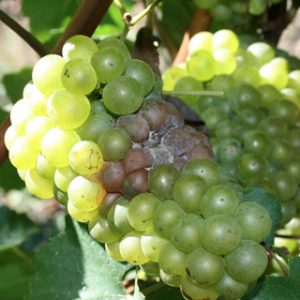 About: A fungal disease which attacks cankered stems and flowers. The fungus grows into a gray brown fuzz mycelium that causes the flower petals to turn brown and shrivel. The predisposing factors are cooler and moist weather conditions. This can be accelerated by weakened plant tissues. Stressed plants are highly susceptible to the disease pathogens.
About: A fungal disease which attacks cankered stems and flowers. The fungus grows into a gray brown fuzz mycelium that causes the flower petals to turn brown and shrivel. The predisposing factors are cooler and moist weather conditions. This can be accelerated by weakened plant tissues. Stressed plants are highly susceptible to the disease pathogens.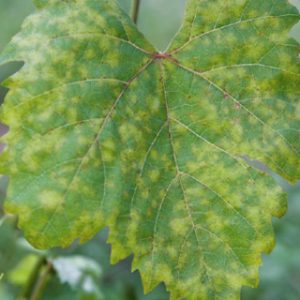 About: A major disease of foliar of fruits and is particular severe in tropical environment. The initial symptoms are found on the top surface of leaves and consist of small pale green to greasy looking angular or rectangular spots that are delimited by leaf vein. During moist weather the corresponding lower leaf surface is covered with downy, pale gray to purple fungal mycelium and spores.
About: A major disease of foliar of fruits and is particular severe in tropical environment. The initial symptoms are found on the top surface of leaves and consist of small pale green to greasy looking angular or rectangular spots that are delimited by leaf vein. During moist weather the corresponding lower leaf surface is covered with downy, pale gray to purple fungal mycelium and spores.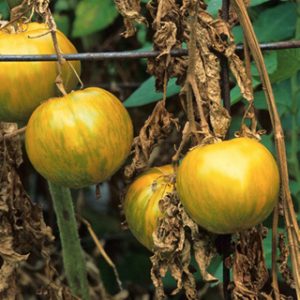 About: Damping-off frequently attacks young seedlings of almost all kinds of fruits. Just after seedlings have emerged from the soil, they are easily killed by fungus organisms likely to be present vegetable field. Seedlings that die or fall over are said to “damp-off”. Seedlings may also die before emergence, referred to as pre-emergence damping-off. The pathogen has increase in importance in years.
About: Damping-off frequently attacks young seedlings of almost all kinds of fruits. Just after seedlings have emerged from the soil, they are easily killed by fungus organisms likely to be present vegetable field. Seedlings that die or fall over are said to “damp-off”. Seedlings may also die before emergence, referred to as pre-emergence damping-off. The pathogen has increase in importance in years.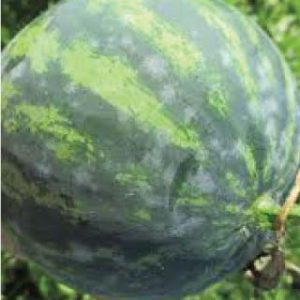 About: This disease is caused by a fungus that attacks the plant and forms a white powdery spore on new tender growth then spreads out into other plant parts. The pathogen is usually favored by warm, dry days and cooler, damp nights. The new leaves may become curled or twisted and the shoots may look badly deformed. In some varieties, the upper surface of the leaf may appear normal but the underside has extensive fungus growth.
About: This disease is caused by a fungus that attacks the plant and forms a white powdery spore on new tender growth then spreads out into other plant parts. The pathogen is usually favored by warm, dry days and cooler, damp nights. The new leaves may become curled or twisted and the shoots may look badly deformed. In some varieties, the upper surface of the leaf may appear normal but the underside has extensive fungus growth.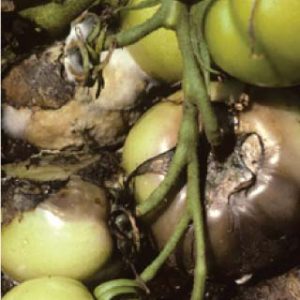 About: Damping-off frequently attacks young seedlings of almost all kinds of vegetables and herbs. Just after seedlings have emerged from the soil, they are easily killed by fungus organisms likely to be present vegetable field. Seedlings that die or fall over are said to “damp-off.” Seedlings may also die before emergence, referred to as pre-emergence damping-off. The pathogen has increase in importance in years.
About: Damping-off frequently attacks young seedlings of almost all kinds of vegetables and herbs. Just after seedlings have emerged from the soil, they are easily killed by fungus organisms likely to be present vegetable field. Seedlings that die or fall over are said to “damp-off.” Seedlings may also die before emergence, referred to as pre-emergence damping-off. The pathogen has increase in importance in years.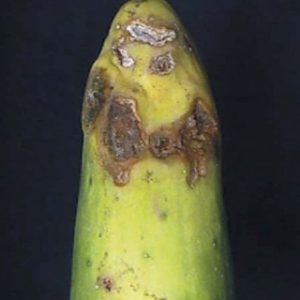 About: Damping-off frequently attacks young seedlings of almost all kinds of vegetables and herbs. Just after seedlings have emerged from the soil, they are easily killed by fungus organisms likely to be present vegetable field. Seedlings that die or fall over are said to “damp-off”. Seedlings may also die before emergence, referred to as pre-emergence damping-off. The pathogen has increase in importance in years.
About: Damping-off frequently attacks young seedlings of almost all kinds of vegetables and herbs. Just after seedlings have emerged from the soil, they are easily killed by fungus organisms likely to be present vegetable field. Seedlings that die or fall over are said to “damp-off”. Seedlings may also die before emergence, referred to as pre-emergence damping-off. The pathogen has increase in importance in years.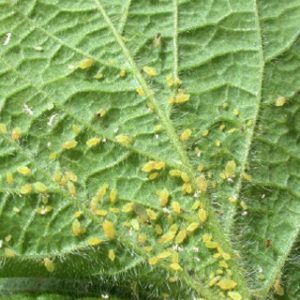 About: Aphids have soft pear-shaped bodies measuring 1.5-4mm in length with long legs and antennae, their colour ranges from green, yellow, brown, red, to black depending on the species. They occur in clusters around the young terminal shoots or under the leaves.
About: Aphids have soft pear-shaped bodies measuring 1.5-4mm in length with long legs and antennae, their colour ranges from green, yellow, brown, red, to black depending on the species. They occur in clusters around the young terminal shoots or under the leaves.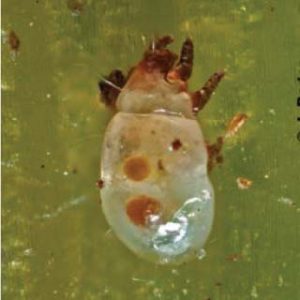 About: Bulb mites infest the bulbs of many plant species among them; lilies, onions, tulip, hyacinth and many other vegetable crops, cereals and ornamentals. They can occur in the field during growing and in storage after harvest.
About: Bulb mites infest the bulbs of many plant species among them; lilies, onions, tulip, hyacinth and many other vegetable crops, cereals and ornamentals. They can occur in the field during growing and in storage after harvest.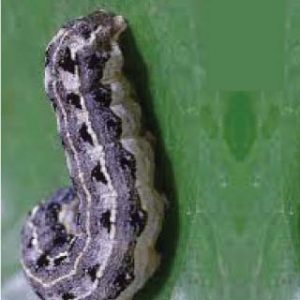 About: Cutworms is the name used for the larvae of a number of species of adult moths. Adults are grayish hairless caterpillars of waxy appearance that attack vegetables during nights and hides in the soil during the day. The larvae stage attacks the first part it encounters, the stem and often the seedling. The adult moth has brown wings with 1-1/2 inch wingspan.
About: Cutworms is the name used for the larvae of a number of species of adult moths. Adults are grayish hairless caterpillars of waxy appearance that attack vegetables during nights and hides in the soil during the day. The larvae stage attacks the first part it encounters, the stem and often the seedling. The adult moth has brown wings with 1-1/2 inch wingspan.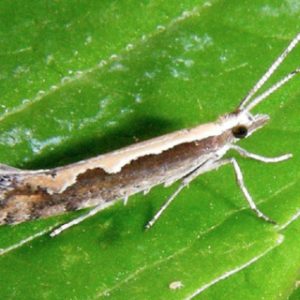 About: The moth is a small, greyish brown with narrow front wings, conspicuously fringed hind wings, and approximately 8 to 9 mm long with a wing span of 12 to 15 mm. When at rest, the wings come together to form a line of white or pale yellow diamonds down the middle of the back. When the wings are folded while the moth is at rest, these markings come together to form three yellow diamonds, hence the name “diamondback”. The life cycle involves seven developmental stages: egg, four larvae instars, pupa and Adult.
About: The moth is a small, greyish brown with narrow front wings, conspicuously fringed hind wings, and approximately 8 to 9 mm long with a wing span of 12 to 15 mm. When at rest, the wings come together to form a line of white or pale yellow diamonds down the middle of the back. When the wings are folded while the moth is at rest, these markings come together to form three yellow diamonds, hence the name “diamondback”. The life cycle involves seven developmental stages: egg, four larvae instars, pupa and Adult.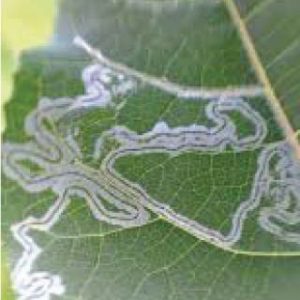 About: Vegetable Leafminers is a small black fly with a bright yellow spot on their thorax; the maggot makes long, slender, white mines (tunnels) in leaves. Mining or puncturing activities on the plant causes cosmetic damage and makes it an important pest. The larvae are often visible within the mine where they remove mesophyll between the surfaces of the leaf.
About: Vegetable Leafminers is a small black fly with a bright yellow spot on their thorax; the maggot makes long, slender, white mines (tunnels) in leaves. Mining or puncturing activities on the plant causes cosmetic damage and makes it an important pest. The larvae are often visible within the mine where they remove mesophyll between the surfaces of the leaf.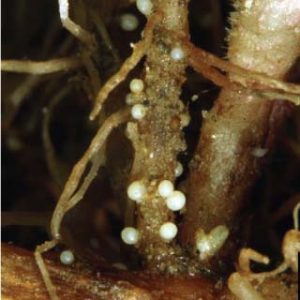 About: Nematodes are tiny, round-bodied, unsegmented, worms. Plant parasitic nematodes cause economic losses to horticultural and field crop worldwide. There are also serious concerns in terms of food safety and environmental quality issues.
About: Nematodes are tiny, round-bodied, unsegmented, worms. Plant parasitic nematodes cause economic losses to horticultural and field crop worldwide. There are also serious concerns in terms of food safety and environmental quality issues.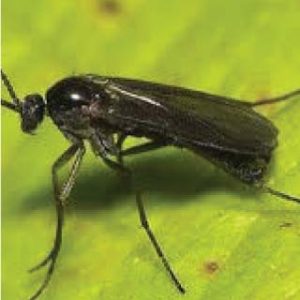 About: Adult Sciarid flies are slender, approximately 2.5 mm in length, and have long legs and antennae. They are weak fliers but can run quite rapidly across the soil surface. Their wings are clear or smokey-colored with no pattern and few distinct veins. However, the females of several species are wingless. They have shiny black head capsules.
About: Adult Sciarid flies are slender, approximately 2.5 mm in length, and have long legs and antennae. They are weak fliers but can run quite rapidly across the soil surface. Their wings are clear or smokey-colored with no pattern and few distinct veins. However, the females of several species are wingless. They have shiny black head capsules.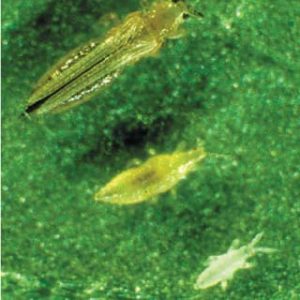 About: Adult thrips are tiny (1-2mm long) slender insects with fringed wings. Immatures are similarly shaped with a long, narrow abdomen but lack wings. Most thrips range in colour from translucent white or yellowish to dark brown or blackish, depending on the species and life stage.
About: Adult thrips are tiny (1-2mm long) slender insects with fringed wings. Immatures are similarly shaped with a long, narrow abdomen but lack wings. Most thrips range in colour from translucent white or yellowish to dark brown or blackish, depending on the species and life stage.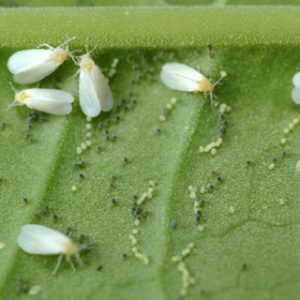 About: Whiteflies derive their name from the powdery white wax covering the adult’s wings and body. Adults are tiny (less than 2mm long) insects with yellowish bodies and whitish wings. They usually occur in groups on the undersides of leaves. The most common species in horticultural farming is the greenhouse whitefly, Trialeurodes vaporariorum.
About: Whiteflies derive their name from the powdery white wax covering the adult’s wings and body. Adults are tiny (less than 2mm long) insects with yellowish bodies and whitish wings. They usually occur in groups on the undersides of leaves. The most common species in horticultural farming is the greenhouse whitefly, Trialeurodes vaporariorum.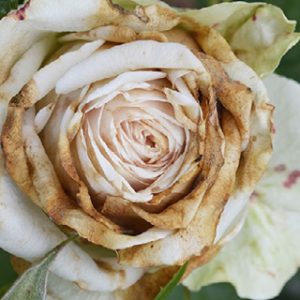 About: A fungal disease which attacks cankered stems and flowers. The fungus grows into a gray brown fuzz mycelium that causes the flower petals to turn brown and shrivel. The predisposing factors are cooler and moist weather conditions. This can be accelerated by weakened plant tissues. Stressed plants are highly susceptible to the disease pathogens.
About: A fungal disease which attacks cankered stems and flowers. The fungus grows into a gray brown fuzz mycelium that causes the flower petals to turn brown and shrivel. The predisposing factors are cooler and moist weather conditions. This can be accelerated by weakened plant tissues. Stressed plants are highly susceptible to the disease pathogens.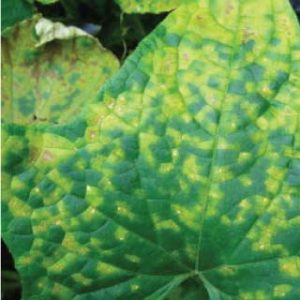 About: A major disease of foliar of vegetables and herbs and is particular severe in tropical environment. The initial symptoms are found on the top surface of leaves and consist of small pale green to greasy looking angular or rectangular spots that are delimited by leaf vein. During moist weather the corresponding lower leaf surface is covered with downy, pale gray to purple fungal mycelium and spores.
About: A major disease of foliar of vegetables and herbs and is particular severe in tropical environment. The initial symptoms are found on the top surface of leaves and consist of small pale green to greasy looking angular or rectangular spots that are delimited by leaf vein. During moist weather the corresponding lower leaf surface is covered with downy, pale gray to purple fungal mycelium and spores.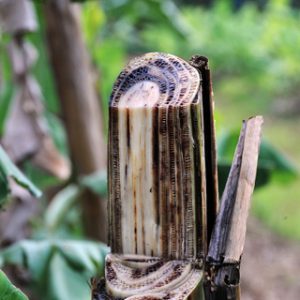 About: Damping-off frequently attacks young seedlings of almost all kinds of vegetables and herbs. Just after seedlings have emerged from the soil, they are easily killed by fungus organisms likely to be present vegetable field. Seedlings that die or fall over are said to “damp-off”. Seedlings may also die before emergence, referred to as pre-emergence damping-off. The pathogen has increase in importance in years.
About: Damping-off frequently attacks young seedlings of almost all kinds of vegetables and herbs. Just after seedlings have emerged from the soil, they are easily killed by fungus organisms likely to be present vegetable field. Seedlings that die or fall over are said to “damp-off”. Seedlings may also die before emergence, referred to as pre-emergence damping-off. The pathogen has increase in importance in years.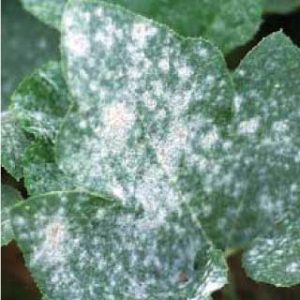 About: This disease is caused by a fungus that attacks the plant and forms a white powdery spore on new tender growth then spreads out into other plant parts. The pathogen is usually favoured by warm, dry days and cooler, damp nights. The new leaves may become curled or twisted and the shoots may look badly deformed. In some varieties, the upper surface of the leaf may appear normal but the underside has extensive fungus growth.
About: This disease is caused by a fungus that attacks the plant and forms a white powdery spore on new tender growth then spreads out into other plant parts. The pathogen is usually favoured by warm, dry days and cooler, damp nights. The new leaves may become curled or twisted and the shoots may look badly deformed. In some varieties, the upper surface of the leaf may appear normal but the underside has extensive fungus growth.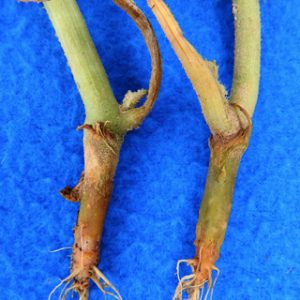 About: Damping-off frequently attacks young seedlings of almost all kinds of vegetables and herbs. Just after seedlings have emerged from the soil, they are easily killed by fungus organisms likely to be present vegetable field. Seedlings that die or fall over are said to “damp-off.” Seedlings may also die before emergence, referred to as pre-emergence damping-off. The pathogen has increase in importance in years.
About: Damping-off frequently attacks young seedlings of almost all kinds of vegetables and herbs. Just after seedlings have emerged from the soil, they are easily killed by fungus organisms likely to be present vegetable field. Seedlings that die or fall over are said to “damp-off.” Seedlings may also die before emergence, referred to as pre-emergence damping-off. The pathogen has increase in importance in years.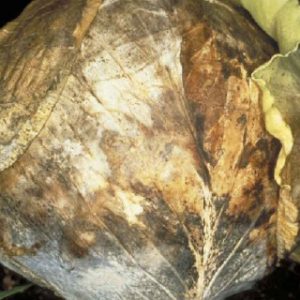 About: Damping-off frequently attacks young seedlings of almost all kinds of vegetables and herbs. Just after seedlings have emerged from the soil, they are easily killed by fungus organisms likely to be present vegetable field. Seedlings that die or fall over are said to “damp-off”. Seedlings may also die before emergence, referred to as pre-emergence damping-off. The pathogen has increase in importance in years.
About: Damping-off frequently attacks young seedlings of almost all kinds of vegetables and herbs. Just after seedlings have emerged from the soil, they are easily killed by fungus organisms likely to be present vegetable field. Seedlings that die or fall over are said to “damp-off”. Seedlings may also die before emergence, referred to as pre-emergence damping-off. The pathogen has increase in importance in years.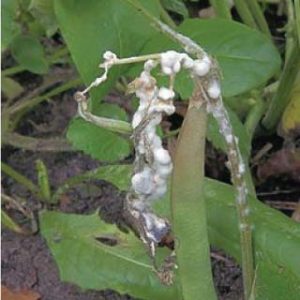 About: Damping-off frequently attacks young seedlings of almost all kinds of vegetables and herbs. Just after seedlings have emerged from the soil, they are easily killed by fungus organisms likely to be present vegetable field. Seedlings that die or fall over are said to “damp-off”. Seedlings may also die before emergence, referred to as pre-emergence damping-off. The pathogen has increase in importance in years.
About: Damping-off frequently attacks young seedlings of almost all kinds of vegetables and herbs. Just after seedlings have emerged from the soil, they are easily killed by fungus organisms likely to be present vegetable field. Seedlings that die or fall over are said to “damp-off”. Seedlings may also die before emergence, referred to as pre-emergence damping-off. The pathogen has increase in importance in years.